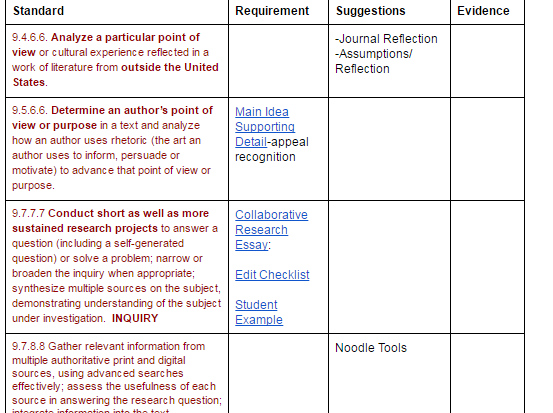Exciting times continue as we spread the love of Personalized Learning! When recently sharing our work with a group of leaders in education, we were asked the following thought provoking question, “How did you get to your current mindset around Personalized Learning?” What a great question to ask when considering how to get other educators to change their practices. So, great in fact we decided to dedicate a post to it.
In thinking back to early conversations in our district around formative (daily work) and summative (“final”) assessments, and debating whether or not learners should be able to reassess (take tests/quizzes again and revise papers), we remember having hesitations. Our concerns came from considering reassessments through a more “traditional lens” in education where the system was designed around compliance. We considered whether allowing learners to retest would negatively impact individual responsibility. In seeking an answer to this question we began to shift our thinking. As we gathered insight one thing came up repeatedly. Trying to fit all students into a “one size fits all” approach is ineffective and unjustified.
Consider this analogy, offered by James Rickabaugh. “If one is building a house and the builder is a week behind or the builder needs to tear down the framework in order to make the new house solid and well built, would you say that’s unacceptable?” The answer, no. We would want the builder to ensure his or her best work and that might mean extending a promise date or redoing an element in the plans. The same goes for the learners in our classrooms. To us it became a “no brainer” that we wanted to help our learners portray their best work. In turn it was clear that would allow us to accurately report a learner’s true competency around a skill. After all, the point is to learn and acquire skills (competencies). It isn’t a race to see who grasps the concepts fastest. Grades needn’t be based on when one is able to acquire the competency but IF one acquires them.
At the same time, our district eliminated leveled English courses at the 9th and 10th grades (grouping students by like abilities). Knowing learners with a wide range of skills would all be in one class, we had to move away from a “traditional” one way fits all philosophy. Our mindset shifted from being married to the content to being focused on the skill behind the standard/competency. When the content becomes a vehicle to achieve learning vs teaching to the content, the options for personalized learning begin to grow. Individuals learn to learn and can apply their newfound skills to future content areas. We don’t suggest that learning the content isn’t important. But the point isn’t to recall, to our dying day, each detail of a book we’ve read. It’s to apply the skills we learn to everything we read, in English class, in other classes, in life. The foundation of our mindset shift around how we construct learning experiences revolves around three pillars of personalized learning: voice and choice/multiple pathways, standards/competencies, and learning profile/learner reflection.
Pillars/Instruction on Demand
There are elements from each of these pillars in all our units of study and they help guide our planning. When designing and planning for a new unit we begin with the standard(s) that will be addressed. Next we outline which assessments will be used to measure learner’s ability to meet the standard(s). When it comes to assessments, we have a balance of “required” assessments that all learners will complete, paired with learner choice assessments. 
Next, we design a pacing map that includes all the formative (daily work) work that will prepare learners for summative (“final”) assessments. This organization allows for learners to follow their own pace, create multiple pathways, and have voice and choice in how they want to access, engage, and express the information they are learning. Classes always start and end together, and we still include direct instruction, but during the formative work time learners choose to participate in a teacher seminar, work independently or collaborate with others. Their choices can change from day to day.
Finally, we plan for and allow learner reflection both at the beginning and end of every unit. At the start, after discussing the “why” behind the unit and the standards to meet, learners write personal learning goals. At the close of the unit, we meet and discuss with each individual learner. The meetings address how an individual sees growth in specific skills, such as reading and writing. We also discuss how each person feels they learn best.
With this system they are choosing how they might best learn. They become accountable not just to the teacher but to themselves. They don’t opt out using the excuse that one size fits all learning doesn’t help or engage them. They begin to focus on the answer to the age old question students ask “what good will this do me?” Learners realize what they stand to gain by mastering the standards and how they will be able to use those skills to better their lives in future.
We find this dynamic creates highly engaged students. And students are still learning to complete their work and their projects on time using parameters that are well established and understood. Students gain a sense of control over their learning and demonstrate a high level of pride in their accomplishments. Students who formerly drifted through class, or were disruptive, become engaged and excited about learning.
As we dig deeper into Personalized Learning, the learning opportunities change and evolve organically as we take on new standards. By offering “instruction on demand” the learning in the classroom becomes much more meaningful, relevant and enjoyable for all.
**Here is the actual document that the screen shots are taken from: https://docs.google.com/document/d/1QRuMbmgBBjoVmNuWAcHwFWjr45fVkBusGY5KwOJIC7g/edit


No comments:
Post a Comment